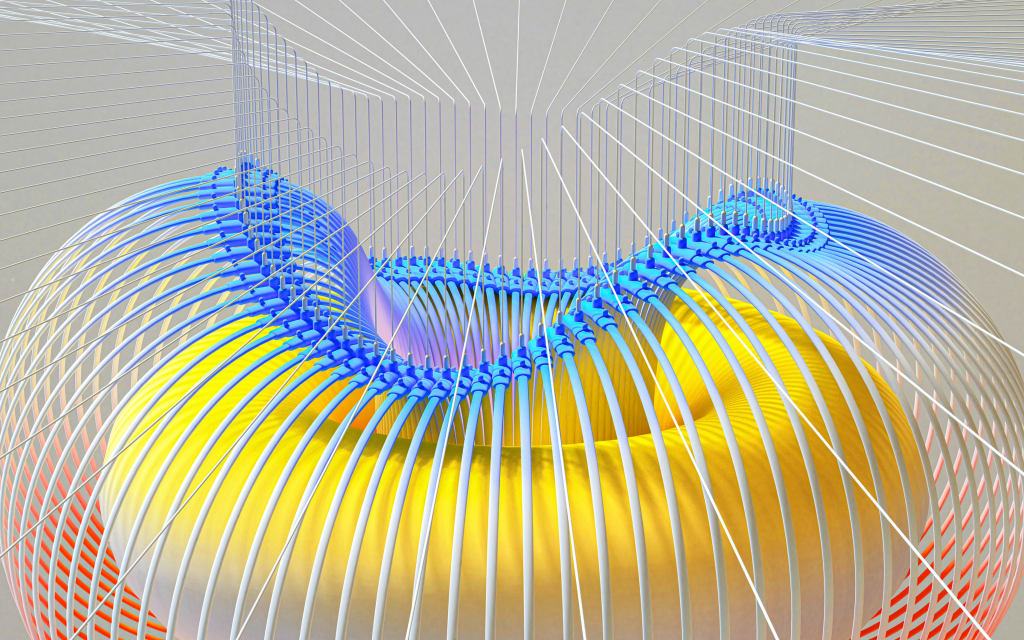Lasso's heavy discovery, the highest energy photon, is expected to solve the mystery of the origin of cosmic rays?
Highest-energy photons, cracking the mystery of the origin of cosmic rays

LHAASO's new discovery, the highest-energy photon observed by humans, is expected to solve the "mystery of the century" of the origin of cosmic rays. Many people may not know what LHAASO is. LHAASO is the world's highest, largest and most sensitive cosmic ray detection device. LHAASO is located in Haizi Mountain, Daocheng County, Sichuan Province, China. Infrastructure construction started in July 2016. On June 19, 2018, the high-altitude cosmic ray observatory officially started construction. Covering an area of about 2,040 acres, it consists of a one-square-kilometer ground shower particle array consisting of 5,195 electromagnetic particle detectors and 1,188 muon detectors, a 78,000-square-meter water Cherenkov detector, and 18 wide-angle Cherenkov telescopes. A composite array of staggered arrangements. Using these four detection techniques, LHAASO can measure cosmic rays in all directions and with multiple variables.
The core scientific goal of LHAASO is to explore the origin of high-energy cosmic rays and related research on cosmic evolution, evolution of high-energy celestial bodies and dark matter. Extensively search for gamma-ray sources in the universe, especially the interior of the Milky Way, measure the composition and energy spectrum of diffuse cosmic rays with higher energy, reveal the laws of cosmic ray generation, acceleration and propagation, and explore new physical frontiers. LHAASO has enabled mankind to reach an unprecedented level in the exploration of deeper universes and higher-energy rays, providing an important experimental platform for conducting interdisciplinary research on the atmosphere, environment, space weather and other cutting-edge sciences.
The so-called cosmic rays refer to a stream of charged particles with considerable energy from the universe. They may produce secondary particles that penetrate the earth's atmosphere and surface, primitive cosmic ray particles, whose energy is on average greater than that of photons. Much, its speed is close to the speed of light, and they crash into the earth from all directions. After the original cosmic particles break into the earth's atmosphere, they collide with the atomic nuclei in the air molecules to generate electrons, positrons, photons, muons, hyperons and other basic particles. . We are protected from most cosmic rays due to the protection of Earth's atmosphere, but those high-energy particles can penetrate the atmosphere, have an effect on life on Earth, and possibly even cause DNA mutations.
Other scientists believe that the global warming issue that has long been widely concerned by the international community is likely to be directly related to cosmic rays. The idea is that the greenhouse effect may not be the only culprit in global warming, and that cosmic rays have the potential to warm the planet by changing the way clouds form in the lower atmosphere. The study of cosmic rays has gradually become an important field of astrophysics research, and many scientists are trying to solve the mystery of cosmic rays. But until now, people have not fully understood the origin of cosmic rays. It is generally believed that the production of cosmic rays may be related to supernova explosions. In this regard, some scientists believe that cosmic rays are produced at the moment of supernova explosion, and the "dead" star emits a stream of charged particles with high energy at the time of the explosion and shoots into the universe; another theory believes that cosmic rays come from The remnants of a supernova after an explosion.
Through the latest news, LHAASO has discovered a large number of ultra-high-energy cosmic accelerators in the Milky Way, and recorded gamma photons of up to 1.4 peta electron volts, 1 beat = 1 quadrillion electron volts, which is the highest energy photon observed by humans, a breakthrough In view of the traditional understanding of the acceleration of particles in the Milky Way, it is "common sense" that the cosmic ray accelerator in the Milky Way has an energy limit. In the past, the predicted gamma-ray energy spectrum would have a "truncation" phenomenon near 0.1 petaelectron volts. The results of LHAASO Completely exceeded this "limit". "This shows that there are higher-energy and more powerful cosmic particle accelerators in the depths of the universe. Scientists have found that the highest-energy photons come from the very active star-forming region in the constellation Cygnus, and they have also discovered 12 stable gamma-ray sources. Extends to around 1 epV. This shows that there are PET accelerators all over the Milky Way. These discoveries open the era of "ultra-high-energy gamma astronomy", indicating that young massive star clusters, supernova remnants, pulsars, etc. are the origin of ultra-high-energy cosmic rays in the Milky Way. The best candidate celestial body is helpful to solve the "mystery of the century" of the origin of cosmic rays.
Understanding the origin and changing laws of cosmic rays and the evolution of cosmic celestial bodies is of great significance to us. Only by knowing more about the universe can we avoid dangers from the universe and lay a solid foundation for human reproduction. Friends, LHAASO's blockbuster new discovery, how long until the mystery of cosmic rays is solved. Comments and forwarding are welcome, thank you.
About the Creator
tannie rusty
little science knowledge






Comments
There are no comments for this story
Be the first to respond and start the conversation.